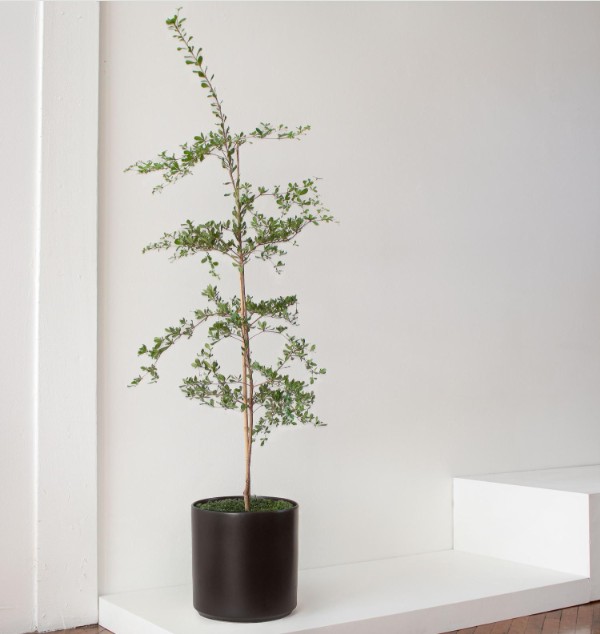The Black Olive Tree, also known as Terminalia buceras or Shady Lady Black Olive Tree, is a captivating and hardy species that adds elegance and charm to any garden or landscape. This tree, native to tropical regions such as the West Indies, thrives in full sun and exhibits impressive resilience to drought, salt spray, and various soil conditions. Despite its name, the Black Olive Tree does not produce olives; rather, it is appreciated for its graceful appearance, low-maintenance care, and adaptability.
In this detailed guide, we will explore everything you need to know about growing and caring for Black Olive Trees, from general characteristics to practical care tips and troubleshooting advice.
General Characteristics of Black Olive Trees

Understanding the basic features of Black Olive Trees will help you provide optimal care. Here are the key characteristics:
- Botanical Name: Terminalia buceras
- Common Names: Black Olive, Oxhorn Bucida, Shady Lady Black Olive
- Family: Combretaceae
- Plant Type: Woody Tree
- Mature Size: Reaches 40-50 feet in height, with a spread of 35-50 feet
- Growth Rate: Slow-growing, especially when grown indoors
- Soil Requirements: Prefers well-drained soils that are slightly acidic to alkaline (pH 5.5 to 8.5)
- Sun Exposure: Thrives in full sun to partial shade, requiring at least six hours of direct sunlight per day
- USDA Hardiness Zones: 10 to 11
- Drought Tolerance: Highly tolerant of drought conditions once established
- Pest and Disease Resistance: Generally resistant to pests and diseases, with occasional issues like sooty mold or minor mite infestations
Black Olive Trees are particularly suited for coastal environments due to their tolerance for salt spray, making them a popular choice for landscapes near the ocean. Additionally, their adaptability to different soil types, such as sand, loam, or clay, enhances their versatility.
Planting and Location
Sunlight Requirements
Black Olive Trees thrive best in locations where they can receive full sunlight for at least 6-8 hours a day. They can tolerate partial shade, but insufficient sunlight may result in slower growth and thinner foliage. For indoor growing, position the tree near a bright, south-facing window where it can receive ample sunlight. If outdoor planting is preferred, ensure the tree is placed in an open space with unobstructed sun exposure.
Soil Preferences
The Black Olive Tree can grow in various soil types, including sandy, loamy, or clay soils. It is important to provide well-drained soil to prevent root rot, especially during its early growth stages. While the tree can tolerate both acidic and alkaline soils, aim for a slightly acidic pH range of 5.5 to 8.5 for optimal health. Mixing in organic compost or well-rotted manure can help improve soil structure and drainage.
Propagation Methods
Propagation of Black Olive Trees can be done through seeds or stem cuttings. Seed propagation is the most common method, but it requires patience, as germination may take time. For those who prefer quicker results, stem cuttings from mature trees can also be used to propagate new plants. Ensure that the cutting is taken from healthy, disease-free branches.
Watering and Fertilization
Watering Needs
Black Olive Trees are relatively drought-tolerant once established, but they require frequent watering during the initial growing stages. Water the tree thoroughly when the top 2-3 inches of soil are dry, usually once every 5-7 days. Avoid overwatering, as soggy soil can lead to root issues. In the winter months, you may reduce watering frequency as the tree enters a period of slower growth.
When grown indoors, the tree may require more frequent watering, especially if the environment is dry or the tree is exposed to consistent sunlight.
Fertilization
To promote healthy growth, fertilize your Black Olive Tree every 6-8 weeks during the growing season (spring and summer). Use a balanced, slow-release fertilizer that provides essential nutrients like nitrogen, phosphorus, and potassium. Avoid over-fertilizing, as excessive nutrients can lead to poor growth and foliage discoloration.
In the fall and winter months, reduce or stop fertilization, as the tree naturally slows down its growth.
Pruning and Shaping
Pruning is essential to maintaining the Black Olive Tree’s shape, especially if grown as an ornamental tree. The best time to prune is in late winter or early spring before new growth begins.
How to Prune:
- Remove Dead or Diseased Branches: Regularly inspect the tree for dead or diseased branches and prune them to prevent the spread of pests or diseases.
- Shape the Canopy: Thin out the tree’s canopy to improve air circulation and sunlight penetration. This helps maintain a healthy, full shape.
- Use Sharp Tools: Always use clean, sharp pruning shears to make precise cuts and reduce the risk of damage.
For an indoor Black Olive Tree, light pruning can be done throughout the year to control its size and shape.
Temperature and Climate Tolerance
Temperature Requirements
Black Olive Trees thrive in warm climates with temperatures between 60-68°F (15-20°C). While they can tolerate slight cold snaps, they are highly sensitive to frost. Temperatures as low as 32°F (0°C) can cause minor damage to the tree, and at 25°F (-4°C), the tree may die. Therefore, it is best to grow these trees in USDA hardiness zones 10-11, where such extreme cold is rare.
If you live in a cooler region, consider growing the Black Olive Tree in a large container that can be moved indoors during cold weather.
Drought and Salt Tolerance
One of the tree’s standout qualities is its ability to withstand drought conditions once mature. Additionally, the Black Olive Tree’s high tolerance for salt spray makes it ideal for coastal environments. This resilience contributes to its popularity as a landscaping tree in urban areas, coastal gardens, and public spaces.
Common Pests and Diseases
Black Olive Trees are generally resistant to most pests and diseases, but they can occasionally be affected by:
- Sooty Mold: This fungal disease, caused by insects like aphids or scale, leads to a black, sooty substance on the leaves. While it can be unsightly, sooty mold does not usually cause severe damage to the tree.
- Bark Borer: These insects bore into the tree’s bark, causing small holes and weakening the tree’s structure. While infestations are rare, they can be managed through proper tree health and pruning.
- Eryphide Mites: These mites can cause galls on the leaves, though they typically do not require control measures.
To minimize pest issues, practice regular tree maintenance, including cleaning debris around the base of the tree and pruning damaged branches.
Troubleshooting Common Problems
Leaf Drop
It is normal for Black Olive Trees to experience leaf drop, especially during seasonal transitions or changes in environmental conditions. If your tree loses leaves, ensure it is receiving adequate light and proper watering. If leaf drop persists, try increasing the amount of sunlight by moving the tree to a brighter location or using a grow light for indoor plants.
Slow Growth
Black Olive Trees are naturally slow growers, particularly indoors. To encourage growth, ensure the tree receives ample sunlight, water, and nutrients. Repotting the tree every 2-3 years can also promote new growth by providing fresh soil and more space for the roots to expand.
Conclusion
The Black Olive Tree is an elegant and resilient addition to any garden or indoor space. Its adaptability, low-maintenance requirements, and unique appearance make it a popular choice among gardeners and landscapers alike. By providing proper care, including sunlight, water, pruning, and fertilization, you can enjoy the beauty of this tree for many years.
Whether you’re growing it outdoors as part of a coastal landscape or indoors as a chic ornamental tree, the Black Olive Tree will reward you with its charm and durability.






